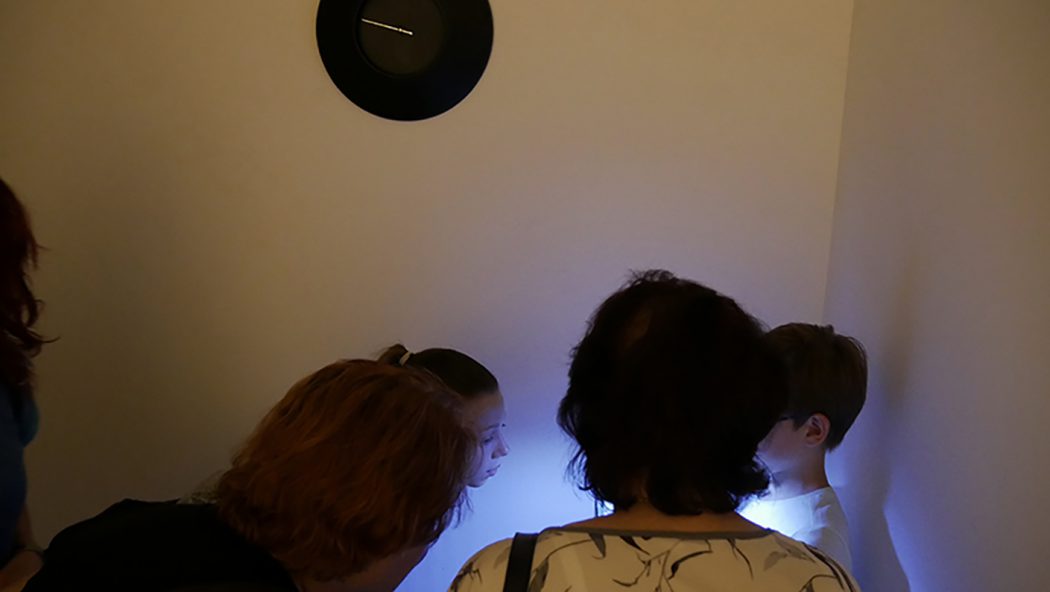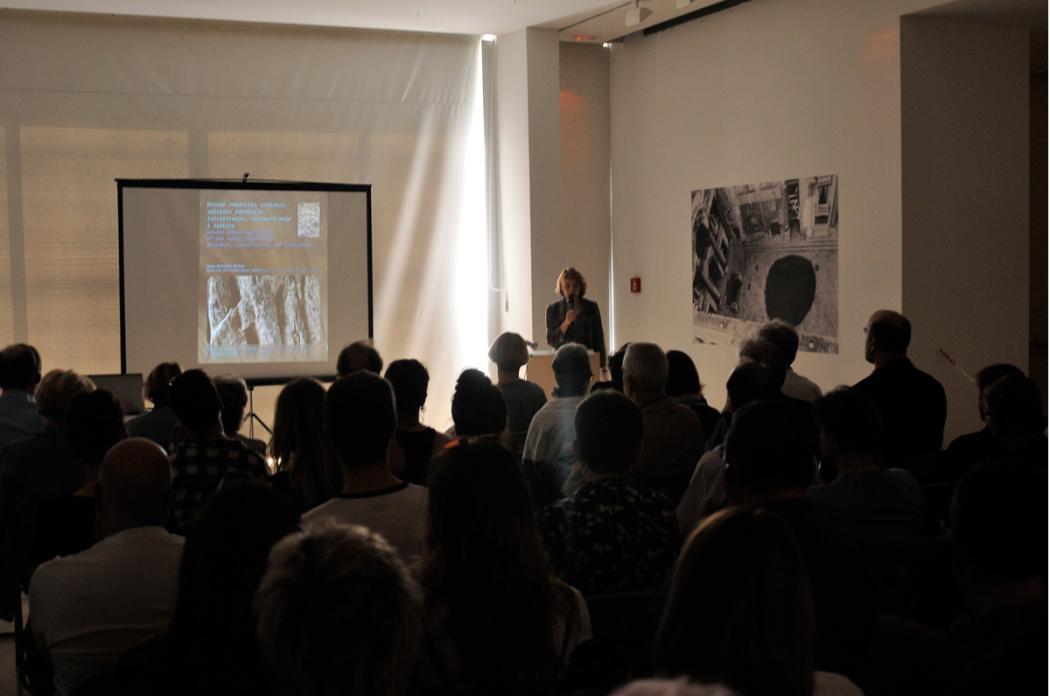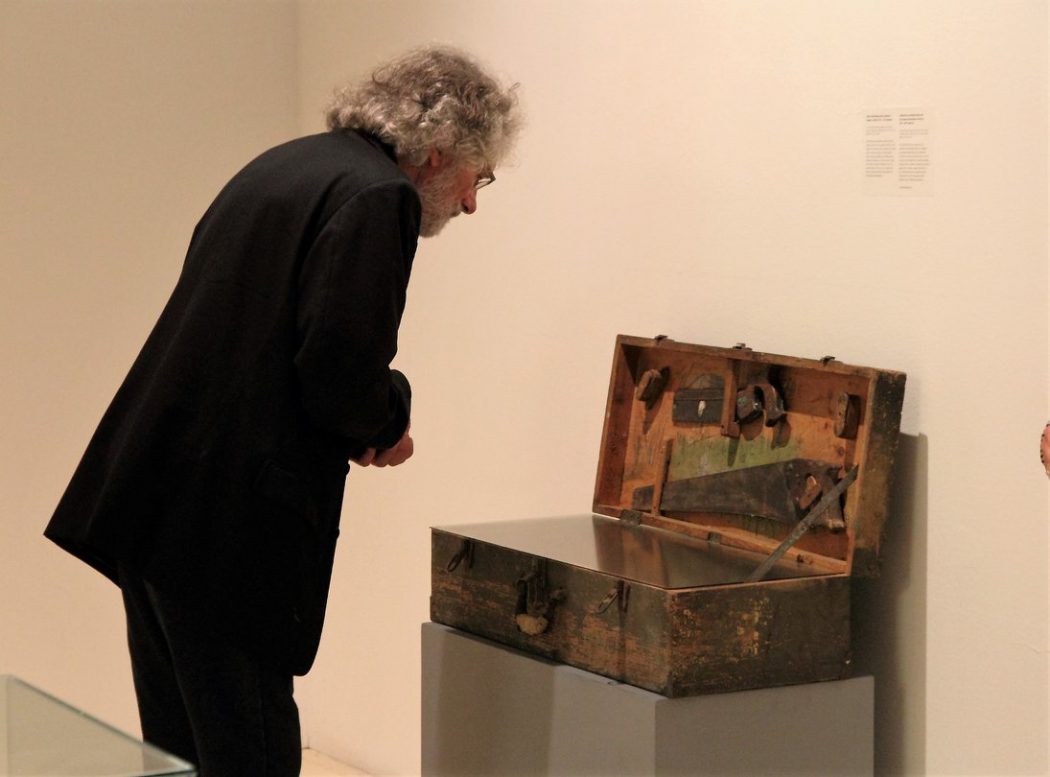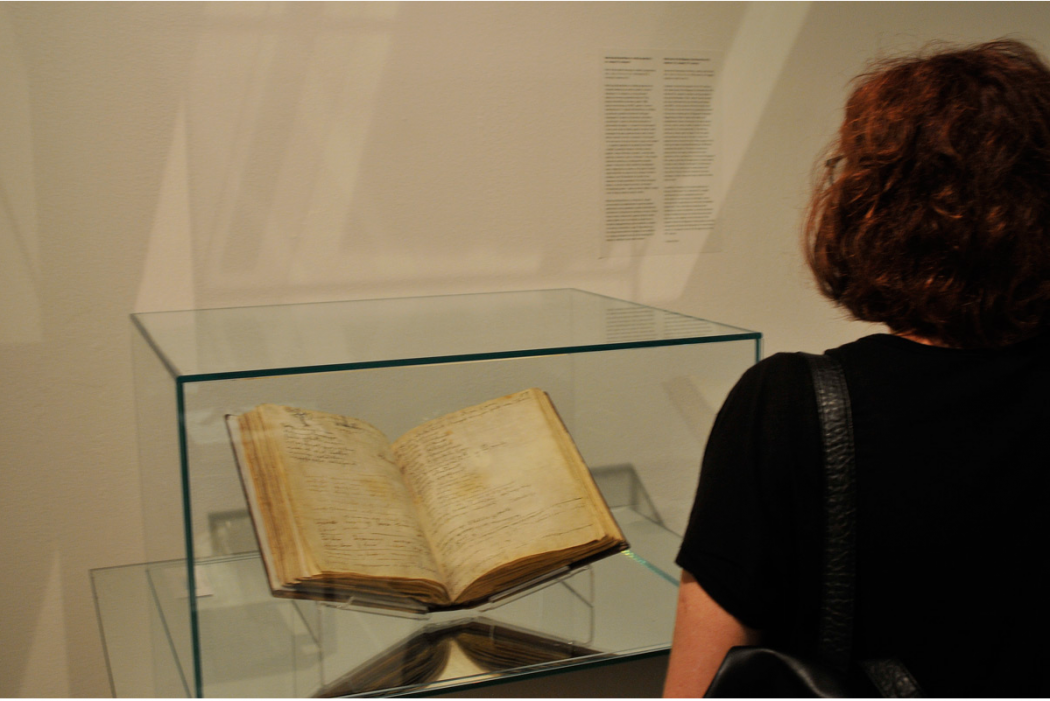Exhibition: Žana Matulić Bilač
Scientific Adviser: Joško Belamarić
collaboration team:
Charles Indekeu, Jasenka Govorčin, Smiljan Gluščević, Franko Ćorić,
Jelena Trajković, Cristina Thieme, Mladen Čulić, Neli Ružić
Croatian Conservation Institute
Art History Institute
Museum of Fine Arts, Split
The recently completed four-year-long conservation and restoration pro- ject of the Croatian Conservation Institute, which focused on the monumental Romanesque wooden door from the Split Cathedral that was still in its original position in the Roman portal of a former Mausoleum, transports us through various mediums directly to the 13th-century world of building materials in Split. It was a world in which 380 door segments were joined together with 632 iron and 732 wooden nails, but also a universe of materials, recipes, and techniques of preparation, painting, and gilding. By summing up this type of technical data, we are able to offer a new, completely imaginary, but more realistic, truthful and exact interpretation of the door.
Our interpretation is simple, it represents a painted sculpture, a unity of painting and sculpture characteristic of Romanesque art that has been lost in a series of previous restorations by A. Švimberský in 1908, who optically, physically, and chemically transformed it, removing its polychromy and replacing iron nails with brass screws.
On 23rd April 1214, the Feast of St. George, Split Cathedral received the gilded door created by Andrija Buvina – pictor de Spaleto (as he is called in one document). The fact that Buvina was also a painter is confirmed by a mention of a fresco depicting St. Christopher which he painted in the Protiron above the Peristyle. There are seven pairs of indented rec- tangular fields with scenes from the Gospels, life and suffering of Christ (from Annunciation to Ascension) on the two wings of the door. Scenes from Christ’s childhood and work go from the top to the bottom on the left side, and scenes of death and Passion from the bottom to the top on the right, so worshipers could, without effort or interruption, follow the life of Christ like reading from a giant book. The common iconological denomi- nator of the entire door might point to its antiheretical character, indicated by the medieval chronicler Thomas the Archdeacon from Split, who said that Archbishop Bernard – who must have designed the door – was direct- ly responsible for organizing a campaign in Dalmatia and Bosnia against the patarenes, and wrote Compilatio contra hereticos.
This exhibition does not only tell the story of Buvina’s masterpiece, but also about the complex restoration carried out by conservator Švimberský in 1908 under the watchful eye of the conservator of the Central Com- mittee in Vienna and Frane Bulić, their commissary in Split. Today, after ‘’the restoration of the restoration’’, taken up by Žana Matulić Bilač (consultant conservator-restorer at the Croatian Conservation Institute) during the last few years, we can understand why this operation was a true milestone of contemporary restoration practice, as well as to what extent it limited our experience of the original polychromy which gave the entire door and every figural field the character of a monumental relief tapestry, and how it diminished the original plasticity of Buvina’s sculptural oeuvre. Contemporary restoration methods enable us to achieve credible virtual reconstructions and understand the real craftsmanship and art of Andrija Buvina. The entire kaleidoscope of new findings presented in this exhibition confirms Max Dvořák’s longstanding statement that Buvina’s door is unique in European Romanesque art and one of the most important documents for the history of medieval sculpture in general.
Joško Belamarić (excerpt from the catalogue)
The recently completed four-year-long conservation and restoration project of the Croatian Conservation Institute, which focused on the monumental Romanesque wooden door from the Split Cathedral that was still in its original position in the Roman portal of a former Mausoleum, transports us through various mediums directly to the 13th-century world of building materials in Split. It was a world in which 380 door segments were joined together with 632 iron and 732 wooden nails, but also a universe of materials, recipes, and techniques of preparation, painting, and gilding. By summing up this type of technical data, we are able to offer a new, completely imaginary, but more realistic, truthful and exact interpretation of the door.
Our interpretation is simple, it represents a painted sculpture, a unity of painting and sculpture characteristic of Romanesque art that has been lost in a series of previous restorations by A. Švimberský in 1908, who optically, physically, and chemically transformed it, removing its polychromy and replacing iron nails with brass screws.
Žana Matulić Bilač (excerpt from the catalogue)
It takes a genuinely refined soul to see something more than impurity in the dust that was accumulated behind the Buvina Doors after they were reinstalled in 1908 following restauration. For the multimedia artist like Neli Ružić whose artistic work refers to
the field of memory, whether in terms of its spiritual deposit or ne physical traces, this was an ideal found situation, the holy grail of the ready-made. The grail, because this physical residue – as opposed to the subject matter densely lled with sociological and cultural meaning that the artist usually deals with – is completely devoid of any ideological signi ers. Specifically, the microscopic and spectral analysis of the deposit revealed that its content is mostly human. These were tiny pieces of epithelium and hair, fabric and bre particles which represent the consequence of constant release of parts of and from ourselves into the environment, the process that started from our very beginning, the day we were born. There, found compressed behind the Buvina Doors were particles of thousands upon tens and hundreds of thousands of religious people, passersby, christening and wedding guests, and eventually tourists who, during these hundred plus years were packed together between these doors and, wittingly or unwittingly, were leaving traces of their conscious or unconscious presence and existence. This scienti c fact prompted the artist to create three works inspired by the theme and motif of dust in three different media: video, artist book and installation. The media interpretation of the appropriated material forms a kind of trinity, three points, one for each of the three proverbial aspects of existence: the body – installation that presents the appropriated material itself; consciousness –the book of photographs that reveal material truth through the optics of the scienti c process and the randomness of pattern through the timescale; and nally, the spirit – video that recorded the in nite process of accumulation, to us mostly invisible dance of dust in the air, the magic of existence of this already dead and rejected world of particles, full of movement and light. Supressing in this instance her activist position towards the current social discourse, Neli Ružić used the language of contemporary visual art within the historical tissue of the central exhibition to materialize her version of the universal feeling of transience that we carry within us from the rst moment of consciousness, and which the religion af liated with the temple that the doors belong to de ned as a cautionary tale about the nature of earthly existence: “Earth to earth, ashes to ashes, dust to dust.”
Branko Franceschi (text from the catalogue)




